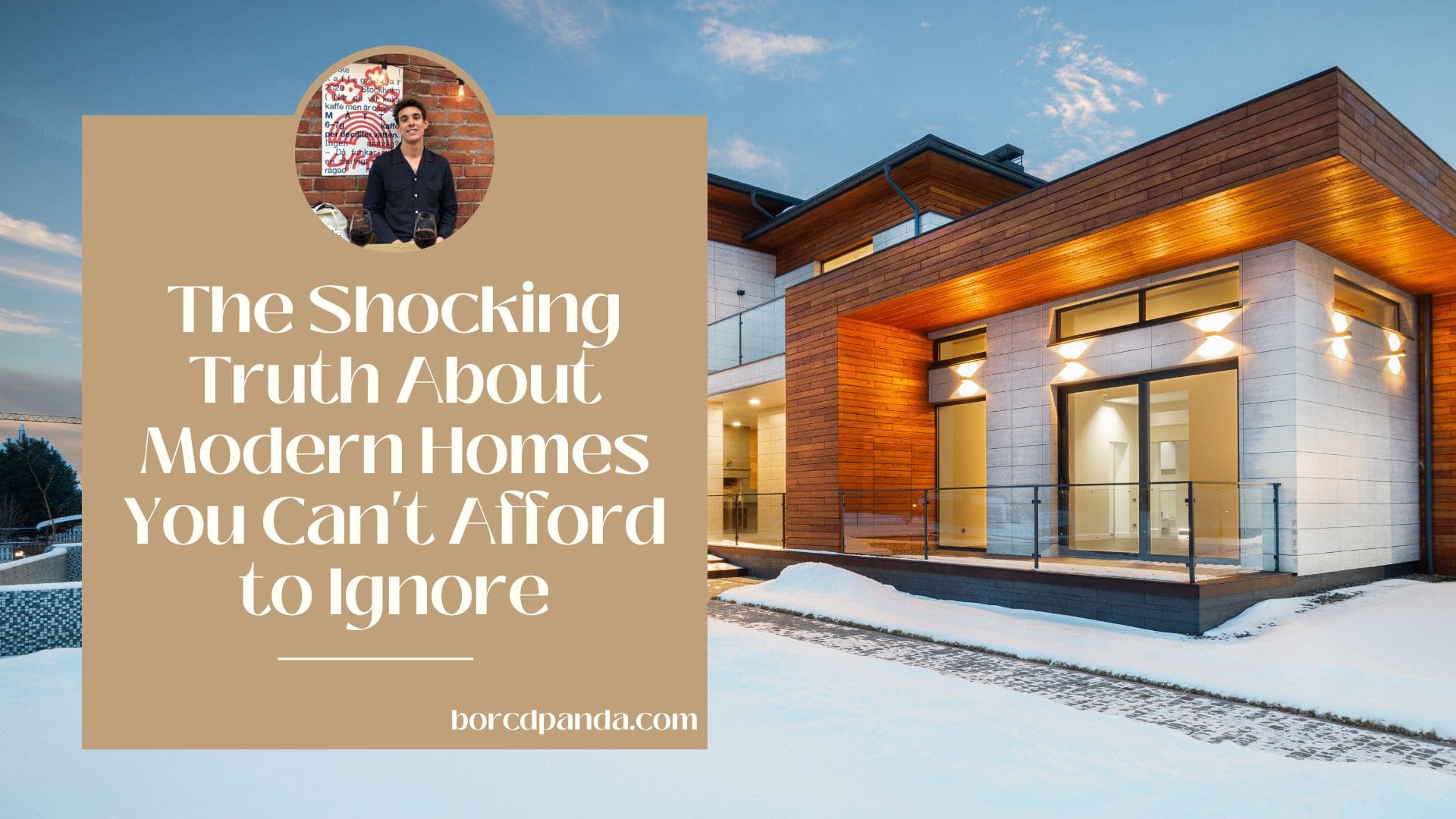The Hidden Costs of Modern Home Ownership
You’ve finally done it. You’ve saved up, made the leap, and purchased that sleek, modern home you’ve always dreamed of. But hold onto your wallet, because the real costs are just beginning to reveal themselves. Let’s pull back the curtain on the financial realities of modern home ownership that no one’s talking about.
Skyrocketing Energy Bills
Remember those floor-to-ceiling windows that sold you on the house? Well, they’re selling you something else now: sky-high energy bills. Modern homes often prioritize aesthetics over efficiency, leaving you to foot the bill for heating and cooling all that poorly insulated space. It’s like trying to warm up the great outdoors – your wallet doesn’t stand a chance.
Maintenance Nightmares
Gone are the days when a bit of elbow grease and a trip to the hardware store could solve most home maintenance issues. Modern homes are packed with complex systems that require specialized knowledge and expensive repairs. That sleek, minimalist faucet? It’ll cost you an arm and a leg when it inevitably breaks down. And don’t even get me started on the smart home features that seem to have a mind of their own.
The Smart Home Tax
Speaking of smart homes, let’s talk about the ongoing costs of keeping your house “intelligent.” From subscription fees for security systems to constant upgrades for outdated tech, your smart home might be making some pretty dumb demands on your bank account. It’s like having a needy tech-genius roommate who constantly needs the latest gadgets to function.
2. Environmental Impact: Not So Green After All
We’ve all heard the hype about modern homes being more environmentally friendly. But let’s dig a little deeper and uncover the not-so-green truth behind those eco-friendly claims.
The Carbon Footprint of Construction
Before you even step foot in your modern home, it’s already made a significant impact on the environment. The production of materials like concrete, steel, and glass for these cutting-edge designs often comes with a hefty carbon price tag. It’s like your house threw a wild party for the planet, and now we’re all dealing with the hangover.
Energy-Hungry Gadgets
Sure, your new home might have an energy-efficient rating, but what about all those power-hungry smart devices? From always-on voice assistants to automated everything, these modern conveniences are taking a toll on both your energy bill and the environment. It’s as if your house developed an addiction to electricity, and you’re enabling its habit.
Disposable Design Philosophy
Modern homes often embrace a trend-driven design philosophy that encourages frequent updates and renovations. This “out with the old, in with the new” mentality leads to more waste and resource consumption. Your grandparents’ sturdy, timeless furniture is probably laughing at your disposable decor from the attic.
3. The Illusion of Space and Functionality
Modern home design often promises optimal space utilization and functionality. But is it delivering on that promise, or is it all smoke and mirrors?
Open Floor Plans: A Double-Edged Sword
Open floor plans are all the rage in modern homes, promising a sense of spaciousness and improved social interaction. But let’s be real – they’re also great for showcasing your culinary disasters to everyone in the house and amplifying every sound from the TV to your partner’s work calls. It’s like living in a fishbowl, minus the peaceful swimming.
Minimal Storage, Maximum Clutter
Sleek, minimalist designs often translate to minimal storage space. Where are you supposed to put all your stuff? Those clean lines and clutter-free surfaces look great in magazines, but in real life, they’re about as practical as a chocolate teapot. You might find yourself longing for the days of unfashionable but oh-so-useful closets and cabinets.
Form Over Function: Style at What Cost?
Modern homes often prioritize aesthetics over practicality. That ultra-modern kitchen might look like it belongs in a sci-fi movie, but good luck figuring out how to open the handleless cabinets or clean that weirdly shaped sink. It’s as if your house is constantly posing for an Instagram shot, leaving you to deal with the awkward realities behind the scenes.
4. The Privacy Paradox in Smart Homes
Smart homes promise convenience and security, but at what cost to your privacy? Let’s explore the unsettling reality of living in a home that’s always watching and listening.
Always Listening, Always Watching
From voice-activated assistants to smart cameras, modern homes are equipped with devices that are constantly monitoring your activities. It’s like having a nosy neighbor who never sleeps and knows your every move. Sure, it’s convenient to turn off the lights with a voice command, but do you really want your house eavesdropping on your late-night snack raids?
Data Collection and Security Risks
Every interaction with your smart home generates data, creating a detailed profile of your habits and preferences. This information is valuable not just to tech companies but potentially to hackers and cybercriminals as well. Your modern home might be inadvertently starring you in a reality show you never signed up for.
The Vulnerability of Connected Systems
The more connected your home becomes, the more vulnerable it is to security breaches. A single weak point in your smart home ecosystem could potentially give intruders access to everything from your security cameras to your door locks. It’s like building a high-tech castle with a secret entrance that any savvy burglar can exploit.
5. The Social Impact of Modern Home Design
Modern homes are changing more than just our living spaces – they’re reshaping our social interactions and family dynamics in ways we might not have anticipated.
Isolation in the Age of Connectivity
Ironically, homes designed to enhance connectivity might be driving us further apart. With everyone retreating to their own tech-equipped corners of the house, family interactions can become increasingly rare. It’s as if we’re all living in our own personal bubbles, even under the same roof.
The Disappearance of Personal Space
Open floor plans and transparent designs might look great, but they can make it challenging to find privacy within your own home. From bathroom doors with frosted glass to bedrooms with walls that don’t reach the ceiling, modern designs often sacrifice personal space for aesthetic appeal. It’s like living in a human terrarium – great for observers, not so great for the inhabitants.
The Pressure to Keep Up with the Joneses
Modern homes often come with an unspoken expectation to maintain a certain lifestyle. The pressure to have the latest gadgets, the trendiest decor, and the most Instagram-worthy spaces can be overwhelming. Your home is no longer just a place to live; it’s become a status symbol and a constant project. It’s exhausting just thinking about it, isn’t it?
6. Health Concerns in Modern Living Spaces
While modern homes boast of improved living conditions, they might be harboring some sneaky health hazards. Let’s take a closer look at how your cutting-edge abode could be affecting your well-being.
Indoor Air Quality Issues
Tightly sealed modern homes can trap pollutants and lead to poor indoor air quality. From off-gassing furniture to inadequate ventilation systems, your home might be a cocktail of invisible nasties. It’s like living in a fancy air freshener – it smells nice, but what are you really breathing in?
The Effects of Artificial Lighting
Modern homes often rely heavily on artificial lighting, which can disrupt our natural circadian rhythms. Those energy-efficient LED bulbs might be great for your electricity bill, but they could be playing havoc with your sleep patterns. It’s as if your house is trying to convince your body that it’s always high noon.
Ergonomic Nightmares in Trendy Furniture
Sleek, modern furniture often sacrifices comfort for style. That avant-garde chair might look like it belongs in an art gallery, but sit in it for more than five minutes, and your back will be screaming for mercy. It’s like your furniture is playing a practical joke on you – “Gotcha! You thought I was for sitting?”
7. The Future of Modern Homes: A Balanced Approach
It’s not all doom and gloom in the world of modern homes. There’s hope on the horizon for a more balanced approach to home design that addresses these issues while still embracing innovation.
Sustainable Technologies on the Horizon
Emerging technologies are focusing on true sustainability, not just eco-friendly lip service. From self-healing materials to advanced recycling systems built into homes, the future looks promising for reducing our environmental impact. Imagine a house that could repair its own cracks or turn your food scraps into energy – now that’s a smart home!
Reimagining Space and Functionality
Designers are starting to prioritize flexible spaces that can adapt to our changing needs. Think movable walls, multi-purpose rooms, and furniture that transforms with the touch of a button. Your living room could become a home office, then a guest bedroom, all without breaking a sweat. It’s like having a home that’s a master of disguise.
Prioritizing Well-being in Home Design
The future of modern homes is likely to place a greater emphasis on mental and physical well-being. This could mean incorporating nature into our living spaces, designing for better sound insulation, and creating areas dedicated to relaxation and mindfulness. Your future home might feel more like a personal wellness retreat than a showpiece.
Conclusion
As we’ve peeled back the layers of modern home design, it’s clear that all that glitters is not gold. From hidden costs and environmental concerns to privacy issues and health impacts, the modern home comes with its fair share of challenges. But it’s not all bad news – awareness is the first step towards change, and the future of home design holds promise for addressing these issues.
The key takeaway? Don’t be dazzled by sleek surfaces and smart gadgets. When it comes to choosing or designing a home, think critically about how it will impact your lifestyle, your wallet, and your well-being in the long run. After all, a home should be more than just a pretty face – it should be a sanctuary that truly enhances your life.
As we look to the future, let’s hope for homes that are not just modern in appearance but truly advanced in their ability to cater to our needs, respect our planet, and support our overall well-being. The dream home of tomorrow might just be one that finds the perfect balance between innovation and practicality, style and substance, technology and humanity.
FAQs
Q: Are modern homes really less energy-efficient than older homes?
A: While modern homes often come with energy-efficient appliances, their overall design (like large windows or open spaces) can lead to higher energy consumption. It’s important to look beyond individual features and consider the home’s overall energy performance.
Q: How can I make my modern home more environmentally friendly?
A: Consider installing solar panels, improving insulation, using smart thermostats, and choosing sustainable materials for renovations. Also, be mindful of your gadget use and opt for energy-efficient appliances.
Q: Is it possible to have a smart home without compromising on privacy?
Yes, but it requires careful consideration. Choose devices from reputable companies with strong privacy policies, regularly update your devices, use strong passwords, and consider setting up a separate network for your smart home devices.
Q: How can I create more storage in a minimalist modern home?
Look for furniture with built-in storage, utilize vertical space with tall shelving units, and consider custom storage solutions that blend with your home’s aesthetic. Don’t be afraid to get creative with hidden storage options!
Q: Are there health benefits to living in a modern home?
Modern homes can offer health benefits through improved air filtration systems, the use of non-toxic materials, and designs that maximize natural light. However, it’s crucial to ensure proper ventilation and to choose furnishings and materials carefully to avoid potential health hazards.






